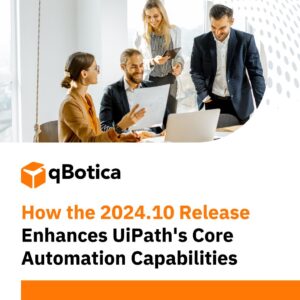AI simulation assistants with agentic workflows are changing the game when it comes to conducting simulations. These assistants, powered by advanced technologies, bring a new level of accuracy and interactivity to simulations, making them invaluable across various industries.
Using large language models (LLMs), these assistants can:
- Predict outcomes
- Evaluate risks
- Inform decisions
They take on complex tasks that were traditionally handled by specialized teams like data scientists and analysts, resulting in improved efficiency and accessibility.
Agentic workflows add another layer of realism and interaction to simulations. They enable AI agents to independently choose and utilize the right tools for specific jobs, leading to:
- Better accuracy
- Increased user engagement
- Improved scalability
This integration of agentic workflows holds immense potential for industries such as manufacturing and healthcare:
- The healthcare industry can leverage AI simulation assistants for infectious disease modeling.
- The manufacturing sector can effectively model complex production processes.
For organizations considering the adoption of this technology, it brings together three key advantages:
- Scalability
- Accuracy
- User engagement
All of which are crucial elements in solving problems through simulations.
Understanding AI Simulation Assistants
AI simulation assistants use advanced technologies like Large Language Models (LLMs) to create interactive and realistic simulations. These assistants can predict outcomes, evaluate risks, and inform decisions across various industries, such as healthcare and manufacturing.
What is an AI-based Simulation Assistant?
An AI-based Simulation Assistant uses LLMs to process and simulate complex scenarios. For example, a generative AI-based simulation assistant built using Claude V3 LLM can streamline workflows through a scalable, serverless architecture and a chatbot-style interface. This makes simulation-driven problem-solving accessible to more people and improves efficiency for experts.
Why Choose qBotica for AI-powered Simulations?
qbotica is an excellent platform for developing AI-powered simulations because it offers:
- Scalability: Easily handle varying workloads.
- Integration: Seamlessly integrate with tools for information retrieval.
- Flexibility: Deploy containerized applications for efficient scaling.
By using these technologies, you can create powerful AI simulation assistants that improve accuracy and user engagement in your simulations.
To learn more about how AI is transforming specific industries, check out these resources:
- Exploring the Importance of Revenue Cycle Management in Healthcare: Discover how Revenue Cycle Management (RCM) is improving healthcare efficiency. Learn about the benefits of RCM in healthcare, its essential processes, and how qBotica is leading the way in automating and optimizing these critical operations.
- State Of California Department Of Motor Vehicles | qBotica: Explore a case study showcasing how qBotica has transformed the processes at the State of California Department of Motor Vehicles, specifically in handling the high volume of MCP renewals through automation.
The Role of Agentic Workflows in Simulations
Deployment Architecture
Agentic workflows leverage the interaction between LLM agents and specialized tools to create dynamic and responsive simulation environments. Deploying such a sophisticated framework requires a strong architecture. This section explains how containerization with Elastic Container Registry (ECR) and orchestration with Elastic Container Service (ECS) form the foundation of this deployment.
Containerization with ECR
- Storage and Management: ECR provides a secure, scalable repository for Docker images, which contain the simulation assistant’s code and dependencies.
- Version Control: ECR supports versioning, enabling you to track changes and roll back to previous versions if necessary.
- Integration: Seamlessly integrates Identity and Access Management (IAM) to control access to your repositories.
Orchestration with ECS
- Task Management: ECS simplifies the management of tasks and services that run your containerized applications. It automatically handles the scheduling of containers across your cluster.
- Scalability: Easily scale up or down based on demand. ECS can dynamically adjust the number of running instances to meet workload requirements.
- Monitoring: Integrates CloudWatch for real-time monitoring and logging, ensuring that you have visibility into the health and performance of your applications.
Advantages of Using Fargate
Fargate improves the deployment process by removing the need to manage server infrastructure. Here are some key benefits:
- Serverless Compute Engine: With Fargate, you don’t need to provision or manage servers. It automatically allocates the right amount of computing resources required to run your containers.
- Cost-Efficiency: Pay only for the resources you use, making it a cost-effective solution for running large-scale simulations.
- Security: Fargate isolates each task or pod at the infrastructure level, enhancing security by reducing attack surfaces.
- Simplified Operations: Focus on building your applications rather than managing the underlying infrastructure, which speeds up development cycles.
Ensuring Scalability and Reliability
Maintaining high performance and availability is crucial for any AI simulation assistant. The Application Load Balancer (ALB) plays a significant role in achieving these goals:
- Traffic Distribution: ALB effectively distributes incoming traffic across multiple targets, ensuring that no single instance is overwhelmed.
- Health Checks: Continuously monitors the health of registered targets and only directs traffic to healthy instances, maintaining consistent performance.
- Flexibility: Supports routing based on various parameters like URL paths or host headers, allowing for more complex traffic management strategies.
By using these advanced services—ECR for container storage, ECS for orchestration, Fargate for serverless computing, and ALB for load balancing—you can build a scalable, reliable AI simulation assistant that maximizes both user engagement and operational efficiency.
Ensuring Scalability and Reliability
Ensuring scalability and reliability is crucial in developing AI simulation assistants. These systems need to handle a large number of user requests while maintaining consistent performance. The Application Load Balancer (ALB) is key to achieving this.
How the ALB ensures scalability and reliability:
- Traffic Distribution: The ALB efficiently distributes incoming traffic across multiple instances of the simulation assistant. This ensures that no single instance is overwhelmed, maintaining both performance and availability.
- Agentic Behavior: Leveraging agentic behavior within LLM agents and tools enhances the immersive quality of simulations. By enabling these agents to interact with various tools, you create more dynamic and responsive simulation workflows.
- Fargate Integration: The use of Fargate for container orchestration provides a scalable, serverless architecture. It allows the simulation assistant to scale up or down based on demand without manual intervention.
- Elastic Container Registry (ECR) & Elastic Container Service (ECS): ECR provides secure storage for container images while ECS manages the deployment and orchestration of these containers. This combination ensures the seamless operation of your simulation assistant at scale.
Implementing these components within your architecture guarantees that your AI simulation assistant can handle increasing workloads efficiently.
For businesses looking to scale their operations, scalable automation is a game-changer.
Incorporating LLM agents with agentic workflows not only improves user engagement but also enhances the overall accuracy and realism of simulations. This approach is vital for complex scenarios where traditional methods fall short, such as in production processes or infectious disease modeling.
For real-world examples, see how qbotica helped a transportation supply chain company process 500 documents in a day.
Conclusion
AI-based Simulation Assistants, enhanced by agentic workflows and leveraging technologies like LLMs, are set to revolutionize the field of simulations. These assistants streamline simulation workflows, making them more accessible and efficient for experts in various industries.
Key Benefits:
- Improved Accuracy: Agentic workflows enable precise simulations by integrating multiple tools and data sources.
- Enhanced User Engagement: Interactive interfaces make it easier for users to interact with complex simulations.
- Scalability and Reliability: Ensure that simulations can be run at scale without compromising performance.
This transformative approach democratizes simulation-driven problem-solving, enabling a broader range of professionals to leverage advanced simulation capabilities.
In addition, embracing these innovations can lead to significant advancements in how simulations are conducted, ultimately driving efficiency and innovation across various sectors.
For instance, qBotica has been recognized in the 2022 Gartner® Market Guide for Intelligent Document Processing Solutions, which highlights the potential of intelligent automation in streamlining processes such as simulations.
Furthermore, qBotica has scaled up its ecosystem approach to help enterprises build their own automation services platforms. This approach aligns with the shift towards end-to-end process automation, where niche automation service providers like qBotica play a crucial role.
By leveraging their expertise and technologies, businesses can enhance their simulation capabilities and achieve greater efficiency.
These resources from qBotica provide valuable insights into the potential of intelligent automation:
FAQs (Frequently Asked Questions)
An AI-based Simulation Assistant uses LLMs to process and simulate data, providing intelligent insights and recommendations for various tasks and workflows.
qbotica k is an excellent platform for developing AI-powered simulations due to its advanced technologies, scalability, reliability, and efficient deployment architecture.
Agentic workflows leverage the interaction between LLM agents to enhance the capabilities of AI simulation assistants, enabling them to perform tasks with autonomy and intelligence.











